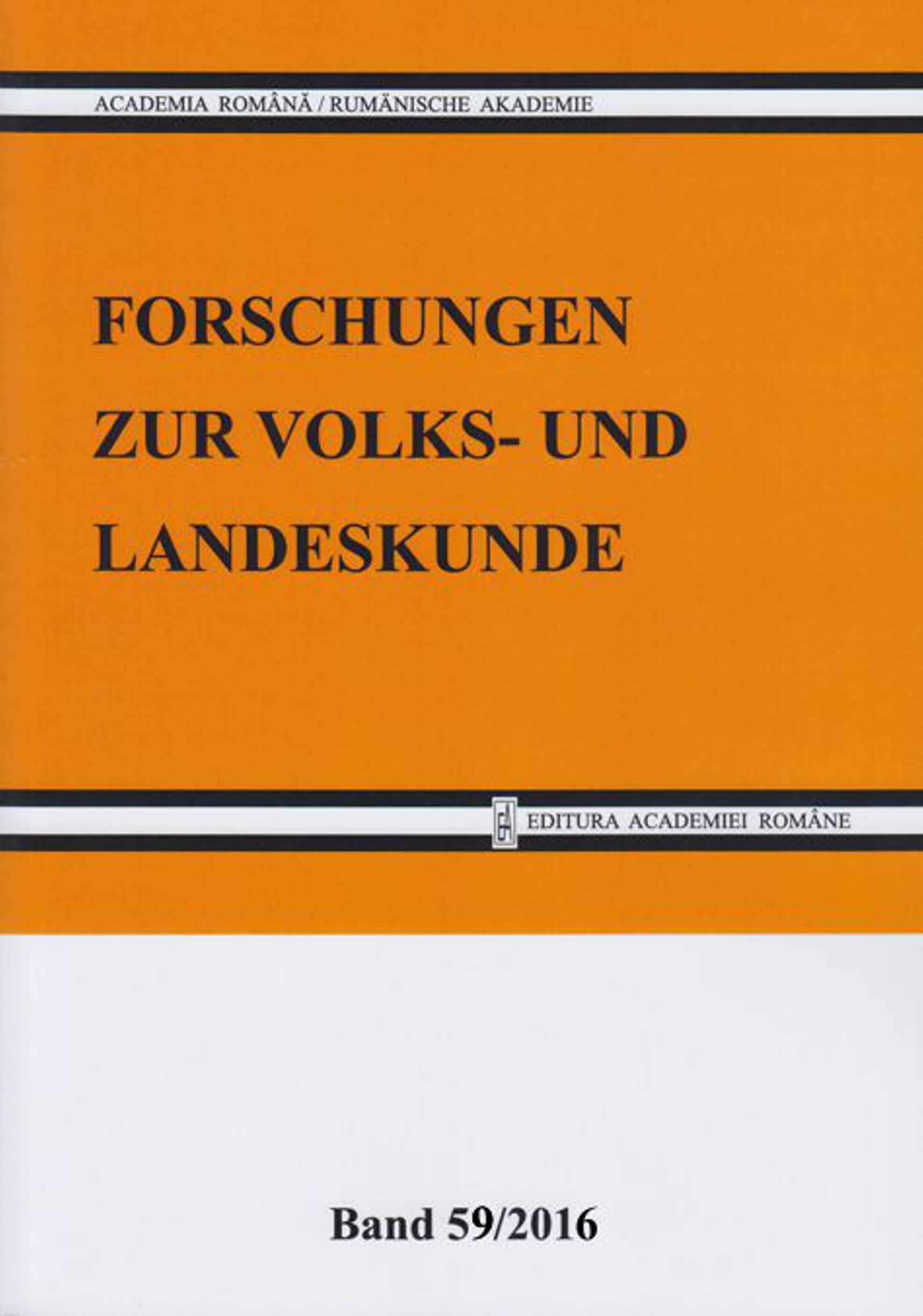Die ökonomische Elite der Siebenbürger Sachsen in der Zwischenkriegszeit
The Transylvanian Saxon Economic Elite in the Interwar Period
Author(s): Vasile CiobanuSubject(s): Economic history, Local History / Microhistory
Published by: Editura Academiei Române
Keywords: Transylvanian Saxons; leaders; agriculture; industry; commerce; banks.
Summary/Abstract: 237,000 Germans were registered in the census of 1930. They formed 8,3% of the Transylvanian population and were the core of the German minority in Romania after 1918. The Transylvanian Saxons’ economic force was greater than their percentage within the total of the Transylvanian population. In 1919, the Transylvanian Saxons were already an economic elite with a long-lasting tradition. In the Middle Ages, the wealthiest craftsmen and merchants were those who exercised the leadership of the entire community. In modern times, the guilds were abolished. These were replaced in time by manufactures, factories and banks. Some of their owners imposed themselves in the leadership of the economic life. Oftentimes, they sent their sons to study in Germany and soon after these became part of the economic elite. Members of the economic elite also arose from the ranks of Transylvanian Saxon farmers. There were about 15,000 homesteads, each having 10 hectares of land. The sons of these farmers were attending the four Saxon peasant schools. Afterwards, some of them attended colleges for agriculture in Germany and Romania. They made an important contribution to the success of this economic branch. Fritz Connert was one of the most prominent figures of the agricultural economic elite. He was the leader of the Saxon Association for Agriculture, editor of the association’s newspaper, member of Parliament. The winegrower Michael Ambrosi was also a member of Parliament and of the association’s leadership. The teachers giving lessons at the agricultural schools were also part of the elite of this field. Members of the industry and commerce elite came from real dynasties of these economic branches: Scherg, Rieger, Schiel, Czell, Jickeli, Misselbacher et al. These branches were represented in Parliament by: Arthur Polony, Otto Herzog, Carl Schiel. The best known representative of the banking elite was Gustav Adolf Klein, the director of the most important Saxon bank. The Saxon economic elite contributed to new directions in the country’s modernization and economic development. It also brought important contributions to this process, and held a special position in Romania’s economic elite. Its characteristics were: high-level expertise, solidarity with the Saxon community, business relations and cultural ties with the mother country Germany. During the interwar period, this elite was constantly renewing itself with new young members, trained at Romanian and German schools. However, many of them came back with Nazi ideas.
Journal: Forschungen zur Volks- und Landeskunde
- Issue Year: 2016
- Issue No: 59
- Page Range: 121-134
- Page Count: 14
- Language: German
- Content File-PDF

